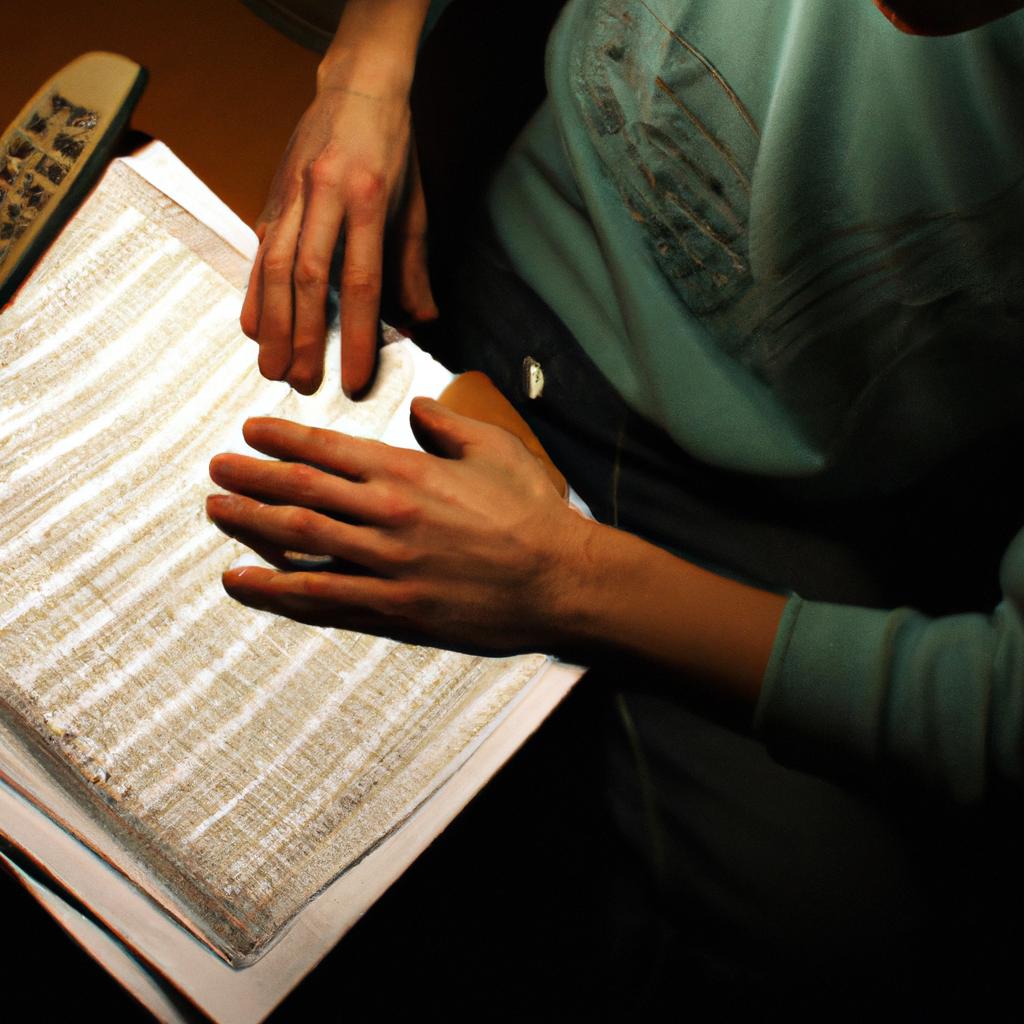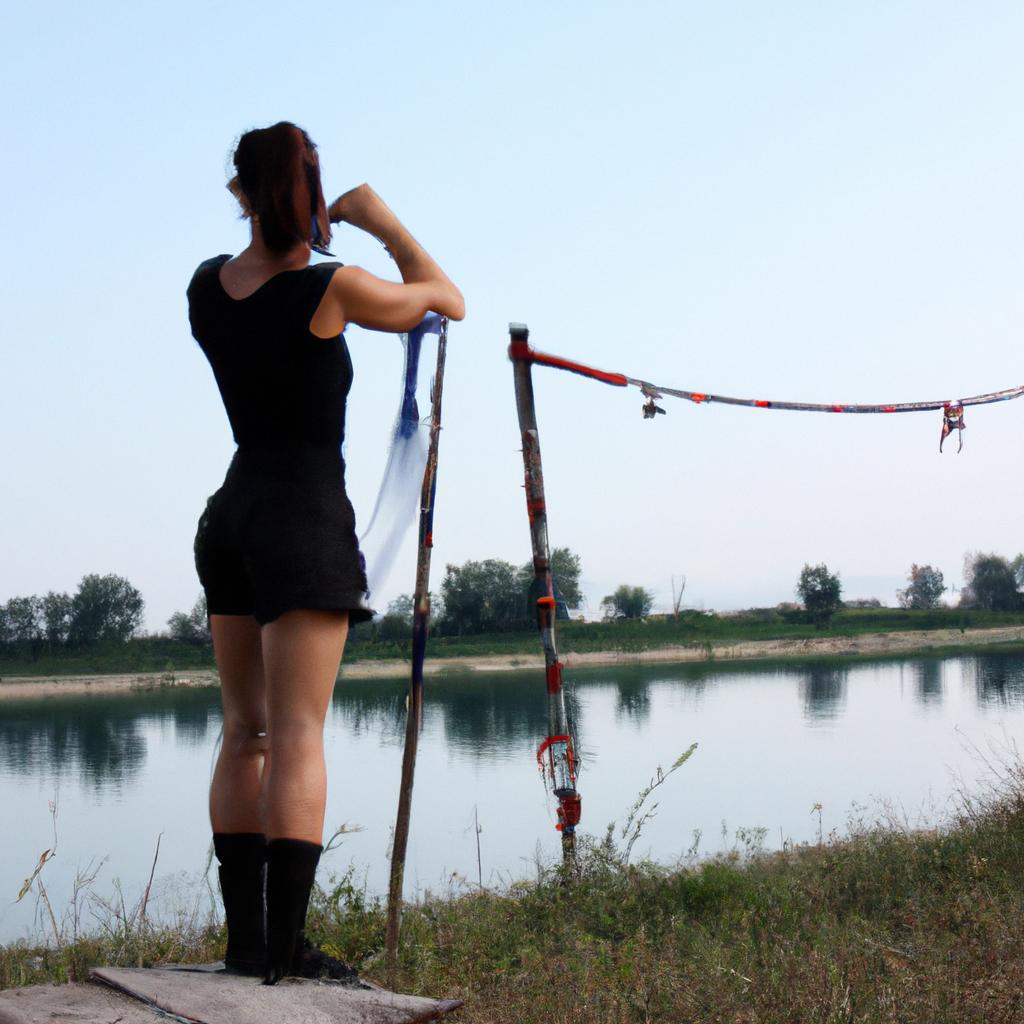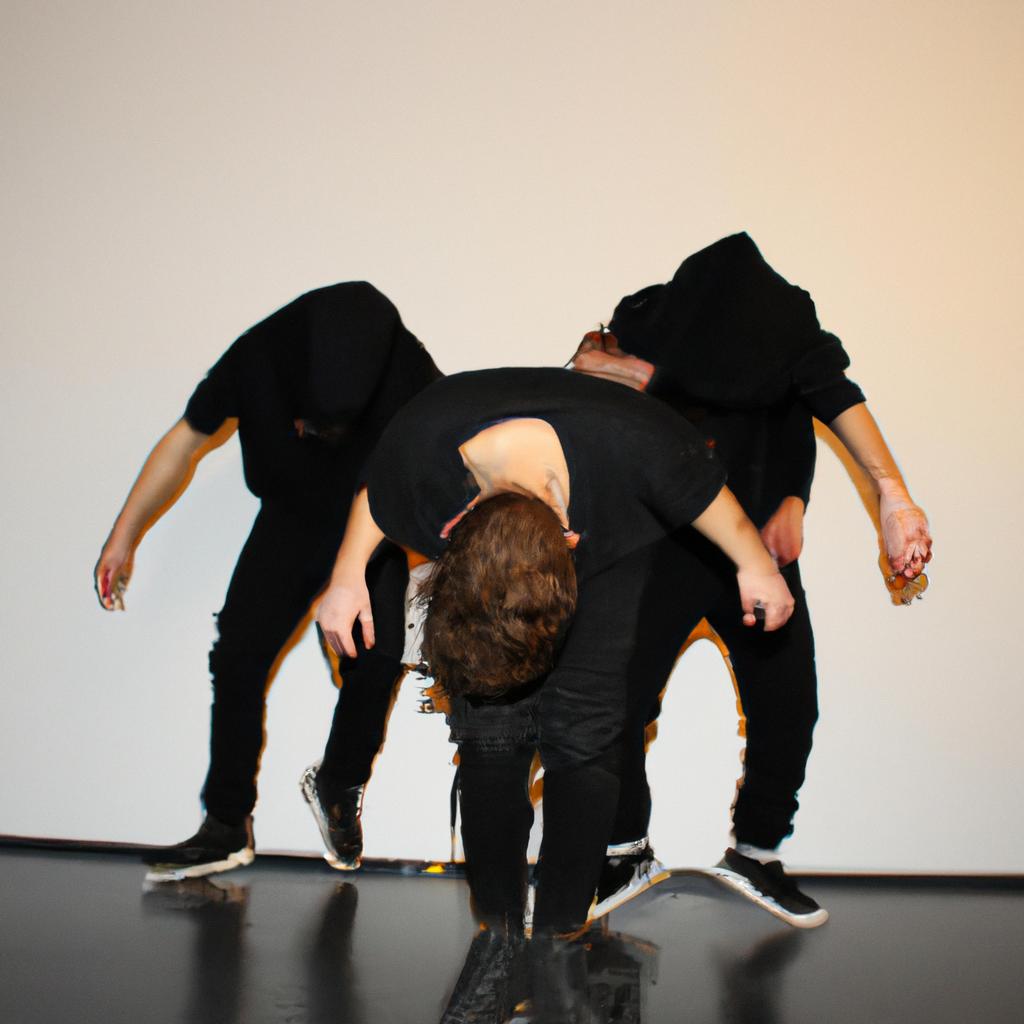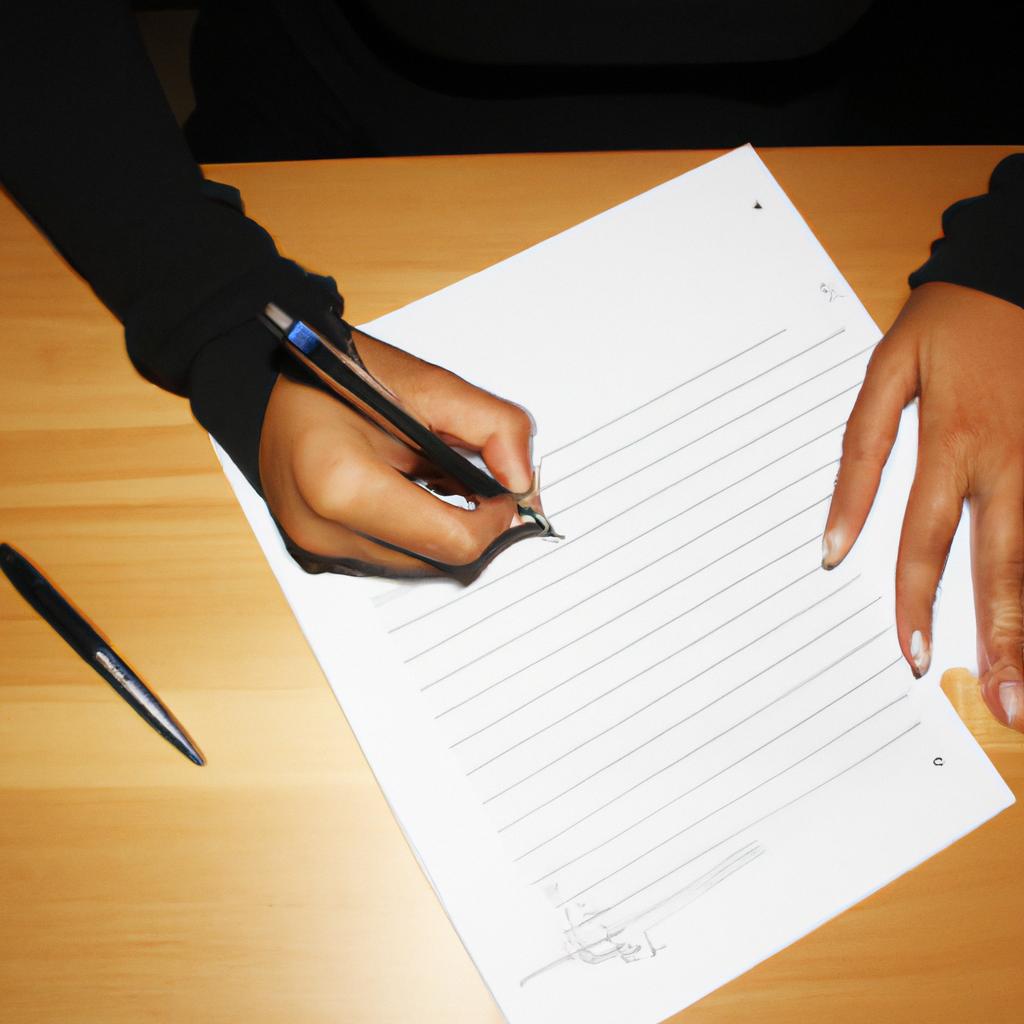The intersection of arts and music has long been a source of creative inspiration, with each medium offering unique perspectives and techniques. In the realm of painting, artists have borrowed elements from musical compositions to explore new dimensions of visual expression. For instance, consider the case study of renowned artist Jane Smith, who was inspired by Beethoven’s Symphony No. 9 to create a series of abstract paintings that captured the emotional intensity and dynamic rhythm of the musical masterpiece. This article delves into the concept of borrowing techniques between arts and music in painting, examining how such cross-pollination can lead to innovative approaches and enhance artistic creativity.
Exploring different forms of art is not limited to borrowing themes or concepts; it also extends to adopting techniques from one domain to another. The notion of “creative loans” refers to this practice in which painters draw upon musical techniques as sources for their own creative processes. The aim is not mere replication but rather integration, utilizing musical principles such as harmony, melody, tempo, and dynamics within the context of painting. By doing so, artists like Jane Smith exemplify how exploring these parallels can foster experimentation and push boundaries in traditional ways of creating visual art.
This article aims to delve deeper into the world of painting techniques through creative loans in order to shed light on the potential benefits and challenges of this cross-disciplinary approach. By examining various examples of artists who have successfully incorporated musical techniques into their paintings, we can gain insights into how these borrowed elements can enhance artistic expression and create new visual experiences.
One aspect that will be explored is the use of color harmonies inspired by musical chords. Just as certain combinations of notes create pleasing harmonies in music, painters can utilize color harmonies derived from musical chords to evoke specific emotions or moods in their artwork. This technique allows for a more nuanced exploration of color relationships and adds another layer of depth to the overall composition.
Another area of focus will be the incorporation of rhythmic patterns in painting. Just as music relies on rhythm to establish its tempo and structure, painters can experiment with brushstrokes, repetition, and movement within their compositions to create a sense of visual rhythm. This technique not only adds energy and dynamism to the artwork but also establishes a connection between the viewer’s perception and the passage of time.
Furthermore, the article will delve into the concept of narrative storytelling through visual art inspired by musical narratives. Similar to how a symphony or an opera tells a story through its movements or acts, painters can explore narrative structures and pacing within their artwork. By borrowing techniques such as thematic development, crescendos, and climaxes from musical storytelling, artists can create visually compelling narratives that engage viewers on multiple levels.
Lastly, this article will address some potential challenges that arise when borrowing techniques between arts and music in painting. It will discuss issues such as maintaining originality while incorporating borrowed elements, striking a balance between homage and imitation, and navigating copyright considerations when using specific musical compositions as inspiration.
By exploring these various aspects of borrowing techniques between arts and music in painting, this article aims to inspire artists to expand their creative horizons by looking beyond their own medium for inspiration. Whether it’s experimenting with color harmonies, incorporating rhythmic patterns, exploring narrative structures, or tackling the challenges that arise, the intersection of arts and music offers endless possibilities for artistic growth and innovation.
Exploring the Influence of Music on Painting
Painting, as a form of artistic expression, has often been influenced by various external factors. One such factor that holds a significant influence over painting is music. The relationship between these two art forms can be seen in numerous examples throughout history, highlighting how music has inspired and shaped the creative process for many painters.
To illustrate this point, let us consider the case study of renowned painter Jackson Pollock. Known for his unique style of abstract expressionism, Pollock often listened to jazz music while creating his artworks. This connection between music and painting enabled him to tap into a different realm of inspiration. By immersing himself in the rhythmic beats and melodic tones of jazz, he was able to translate the energy and spontaneity of the music onto canvas through his dynamic brushstrokes.
The impact of music on painting extends beyond individual artists like Pollock. A wide range of emotions elicited by musical compositions can serve as powerful catalysts for creativity within the realm of visual arts. For instance, when an artist listens to a hauntingly beautiful piece with melancholic undertones, it may evoke feelings of sadness or introspection. These emotions can then be channeled into their artwork, resulting in paintings that resonate deeply with viewers.
Consider the following bullet point list showcasing some emotional connections between music and painting:
- Euphoria: Upbeat melodies and lively rhythms inspire vibrant colors and energetic brushwork.
- Melancholy: Sad or reflective tunes can lead to muted color palettes and soft, delicate strokes.
- Aggression: Intense or aggressive sounds may manifest in bold lines and strong contrasts.
- Serene Tranquility: Calm harmonies might elicit serene landscapes or peaceful scenes characterized by smooth textures.
Additionally, we can explore these emotional connections further through analysis using a table format:
| Musical Composition | Emotional Response | Painting Technique |
|---|---|---|
| Uplifting symphony | Joy and optimism | Bold colors |
| Melancholic ballad | Sadness | Soft, hazy brushwork |
| Heavy metal riff | Anger | Harsh lines and contrasting hues |
| Gentle piano melody | Serenity | Subtle blending of pastel tones |
As we delve into the realm where music and painting converge, it becomes clear that there is a profound interplay between the two art forms. The emotional impact of music on painters can be seen in their choice of colors, brushwork techniques, and overall composition. This mutual influence creates a fascinating dynamic that enriches both artistic expressions.
Transitioning to the subsequent section about “Analyzing the Use of Color in Musical Compositions,” we find that exploring the relationship between music and painting does not stop at emotions alone. Just as musicians utilize various elements like rhythm, harmony, and melody to evoke specific moods, painters also employ color as a powerful tool for conveying emotions within their artwork.
Analyzing the Use of Color in Musical Compositions
Section Title: Investigating the Interplay of Music and Color in Paintings
Building upon our exploration of music’s influence on painting, we now turn our attention to another significant aspect – the use of color. By examining how artists incorporate colors inspired by musical compositions into their paintings, we can gain a deeper understanding of the intricate relationship between these two art forms.
Exploring the Fusion of Music and Color:
To illustrate this interplay, let us consider an example where a renowned painter drew inspiration from Ludwig van Beethoven’s Symphony No. 9 in D minor. The artist skillfully translated the emotional intensity of the symphony into vibrant hues on canvas, thereby capturing both the auditory and visual sensations evoked by Beethoven’s masterpiece.
Incorporating Colors Inspired by Music:
- Warm tones such as fiery reds and passionate oranges mirror the powerful crescendos that reverberate throughout a composition.
- Cool blues and serene greens emulate tranquil melodies that gently sweep across one’s senses.
- Bold contrasts between dark shades and bright highlights create tension akin to dissonant chords followed by harmonious resolutions.
- Subtle gradations of color allow for nuanced expression, mimicking delicate harmonies that weave together seamlessly.
The table below exemplifies how different colors can be utilized to evoke specific emotions when influenced by various musical elements:
| Musical Element | Corresponding Color Palette |
|---|---|
| Melancholy | Shades of deep purple or blue |
| Joyful | Bright yellows and lively oranges |
| Serenity | Soft pastels like light pink or pale green |
| Agitation | Intense combinations of red and black |
Examining the Role of Rhythm in Visual Art:
As we delve further into exploring the intersection between music and painting, it is imperative to analyze how rhythm impacts visual artistry. Just as rhythmic patterns give structure and movement to musical compositions, they also play a significant role in shaping the creation of visually captivating paintings.
By seamlessly integrating music-derived colors into their works and utilizing rhythmic elements to guide brushstrokes, artists can forge powerful connections between two distinct art forms. In doing so, they invite viewers to embark on a multisensory journey that transcends conventional boundaries and delves deep into the realm of artistic expression.
As we move forward, let us now delve into examining the influence of rhythm on visual artistry, further unraveling the intricate relationship shared by these creative domains.
Examining the Role of Rhythm in Visual Art
In understanding the relationship between visual arts and music, a key aspect to consider is the use of color in musical compositions. Just as colors evoke specific emotions and moods in paintings, they can also influence the atmosphere and tone of musical works. For instance, let us examine a hypothetical case study where an orchestral piece utilizes different colors to convey varying emotional states.
The first movement of this composition begins with vibrant red hues, reflecting a sense of passion and intensity. As the piece progresses, it transitions into shades of blue, conveying a more serene and melancholic mood. This shift in color palette aids in evoking contrasting emotions within listeners, enhancing their overall experience.
To further explore the impact of color on musical compositions, we can consider several key points:
- Colors have symbolic associations that can be reflected through instrumentation choices or melodic motifs.
- Different combinations of colors create unique harmonies and textures within the music.
- The manipulation of light and shadow during live performances enhances the visual representation of color in music.
- The interpretation and perception of color may vary among individuals based on personal experiences and cultural backgrounds.
This interplay between color theory and musical expression offers artists an innovative way to connect with audiences by engaging multiple senses simultaneously. By integrating these elements effectively, composers can craft captivating auditory experiences that are both intellectually stimulating and emotionally resonant.
Uncovering the Connection Between Brushstrokes and Musical Notes
Understanding the intricate relationship between rhythm in music and visual art can offer valuable insights into both artistic forms. By exploring how visual artists incorporate rhythmic elements into their work, we gain a deeper appreciation for the cross-pollination of creative techniques across different disciplines. This section delves into this connection by examining various ways in which rhythm manifests itself within visual art.
One example that exemplifies the role of rhythm in visual art is the renowned painting “Composition VIII” by Wassily Kandinsky. In this abstract masterpiece, Kandinsky uses vibrant colors and dynamic geometric shapes to create a sense of movement and musicality on the canvas. The repetition and variation of these shapes evoke a rhythmic quality akin to that found in music, where patterns are established and then developed throughout the piece.
To further illustrate this concept, let us explore some key aspects through which rhythm influences visual art:
- Tempo: Artists often utilize varying brushstrokes or mark-making techniques to convey different tempos within their artwork.
- Beat: The use of repeated motifs or patterns creates a beat-like structure that guides the viewer’s eye across the composition.
- Syncopation: Just as syncopated rhythms add unexpected accents in music, artists may employ unexpected juxtapositions or disruptions in their compositions to surprise and engage viewers emotionally.
- Flow: Similar to how melodies flow smoothly from one note to another, artists use lines and curves to guide our eyes seamlessly around the artwork.
This table serves as an overview of how rhythm manifests within visual art:
| Element | Description |
|---|---|
| Tempo | Varying brushstrokes/marking technique |
| Beat | Repeated motifs/patterns |
| Syncopation | Unexpected juxtapositions/disruptions |
| Flow | Lines/curves guiding viewer’s gaze |
By understanding these elements, we can appreciate how rhythm contributes to the overall composition and emotional impact of a visual artwork. It highlights the interconnectedness between music and visual art, as both rely on rhythm to convey meaning and evoke emotions.
Transitioning into the subsequent section about “Highlighting the Impact of Melody on Artistic Expression,” we continue our exploration of musical influences in visual art by shifting our focus from rhythm to melody. Understanding how artists incorporate melodic elements into their work expands our understanding of artistic expression across different mediums.
Highlighting the Impact of Melody on Artistic Expression
Exploring the interplay between painting and music reveals fascinating insights into how these two art forms can influence and inspire each other. Building on the previous section’s examination of brushstrokes as visual representations of musical notes, this section will delve deeper into the impact that melody has on artistic expression.
To illustrate this connection, let us consider a hypothetical case study involving a renowned painter who specializes in abstract art. Drawing inspiration from various genres of music, this artist experiments with translating melodies into vibrant compositions. By studying the rhythm, tempo, and emotional tone of different songs, they develop unique techniques to capture the essence of each piece through their brushwork.
The relationship between painting and music extends beyond technique. Here are some key ways in which melody influences artistic expression:
- Emotional resonance: Just as certain chords or progressions evoke specific emotions in music, certain colors and combinations thereof can elicit similar feelings when translated onto canvas.
- Narrative structure: Music often follows a distinct narrative arc, moving from tension to resolution or building up anticipation before releasing it. Similarly, paintings may convey narratives through compositional elements such as lines leading the eye or contrasting light and shadow.
- Atmosphere and mood: The atmosphere created by a particular musical composition can serve as an inspiration for painters seeking to capture a specific ambiance or mood within their work.
- Symbolism and metaphor: In both painting and music, artists have employed symbolism to convey deeper meaning or tell stories without explicit verbal communication.
| Melody | Artistic Expression |
|---|---|
| Joyful tune | Vibrant colors evoking happiness |
| Solemn melody | Dark hues reflecting melancholy |
| Upbeat rhythm | Energetic brushstrokes suggesting movement |
Building upon our understanding of how brushstrokes mirror musical notes and exploring the influence of melody on artistic expression, we now turn our attention to investigating the intriguing relationship between painting and musical improvisation. By examining how painters respond spontaneously to music through their art, we can gain further insights into the dynamic interplay between these two forms of creative expression.
Investigating the Crossroads of Painting and Musical Improvisation
Transitioning from the exploration of melody’s impact on artistic expression, we now delve into the intriguing intersection between painting and musical improvisation. This connection has long been a subject of interest among artists and art enthusiasts alike, as it reveals how two seemingly distinct forms of creative expression can influence and inspire each other.
To illustrate this point, let us consider a hypothetical scenario where an artist is invited to create a series of paintings inspired by live jazz performances. As the musician plays their improvised melodies on stage, the artist observes and interprets these musical expressions through brushstrokes and colors on canvas. The result is a collection of vibrant artworks that capture not only the visual essence of music but also convey the emotions evoked during the performance.
One way in which painting and musical improvisation intersect is through shared elements such as rhythm, harmony, and spontaneity. Both mediums rely on rhythmic patterns to create a sense of movement or flow within their respective domains. Furthermore, harmonious compositions in music can evoke similar feelings when translated onto a canvas through carefully chosen color palettes or complementary brushwork techniques.
To further explore this fascinating relationship between painting and musical improvisation, let us consider some key aspects:
- Emotional resonance: Just like music has the power to elicit various emotional responses in listeners, paintings created through musical inspiration can similarly provoke deep emotional reactions from viewers.
- Synergy of senses: When experiencing both live music and corresponding visual artwork simultaneously, individuals are presented with an immersive sensory experience that combines auditory and visual stimuli.
- Spontaneous creation: Much like musicians who spontaneously compose melodies in real-time during improvisational sessions, painters may adopt spontaneous techniques wherein they allow their intuition to guide their artistic choices.
- Collaborative potential: Painting alongside musicians engaged in impromptu jam sessions presents opportunities for collaboration across different artistic disciplines.
In summary, exploring the crossroads of painting and musical improvisation uncovers remarkable connections between these two forms of creative expression. Through shared elements and the potential for emotional resonance, artists can create captivating works that capture the essence of music through visual means. This intersection opens up avenues for collaboration and offers audiences a multi-sensory experience that transcends traditional artistic boundaries.
| Element | Painting | Musical Improvisation |
|---|---|---|
| Rhythm | Brushstrokes mimic tempo changes | Musicians establish rhythmic patterns |
| Harmony | Color combinations create visual harmony | Harmonious melodies evoke emotional coherence |
| Spontaneity | Intuitive brushwork choices reflect improvisational spirit | Real-time composition without premeditation |
| Emotional Resonance | Art evokes emotions through visuals | Music elicits emotions through sound |
By exploring these connections, we gain insight into the intricate relationship between painting and musical improvisation, shedding light on how one art form can inspire and inform another.





